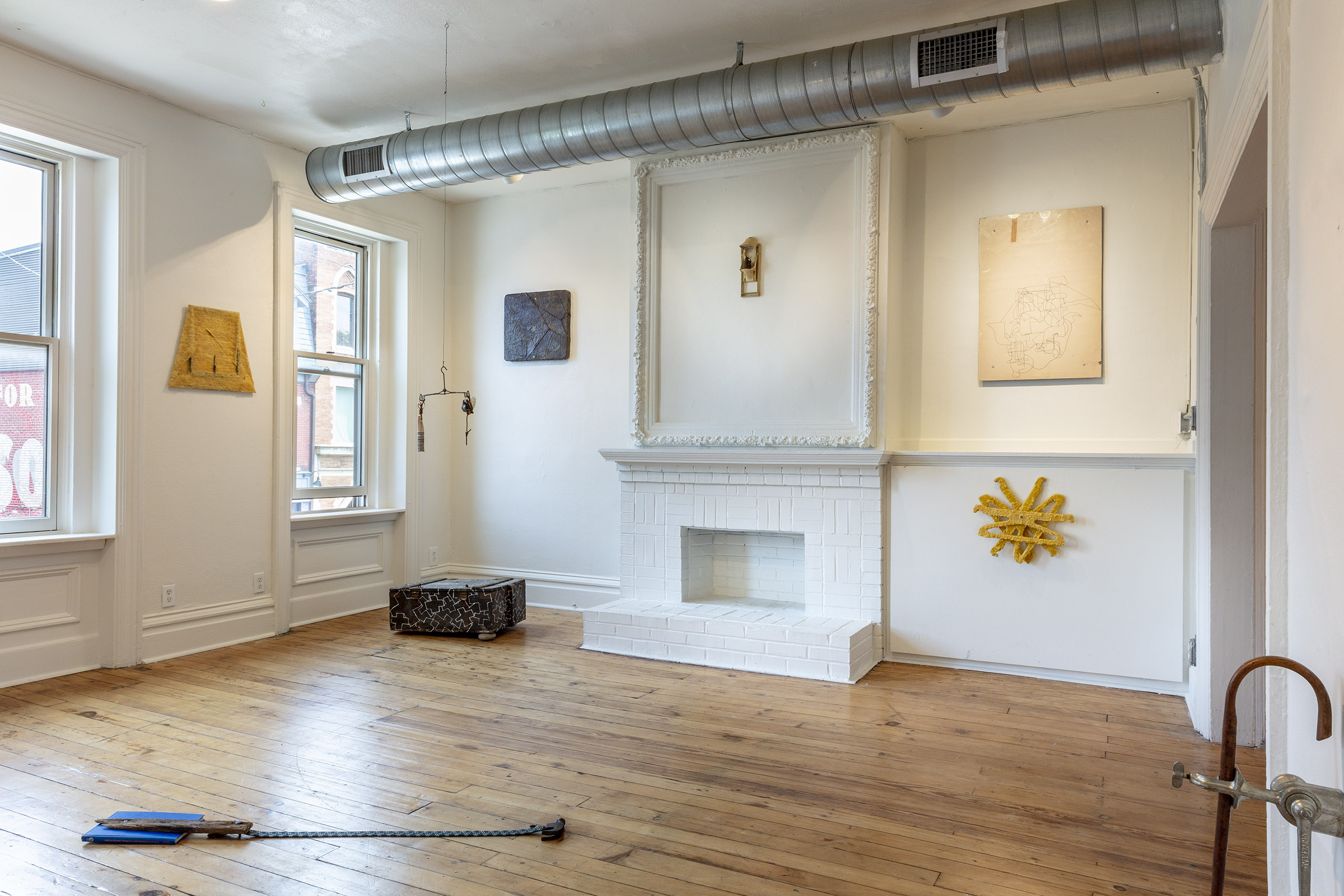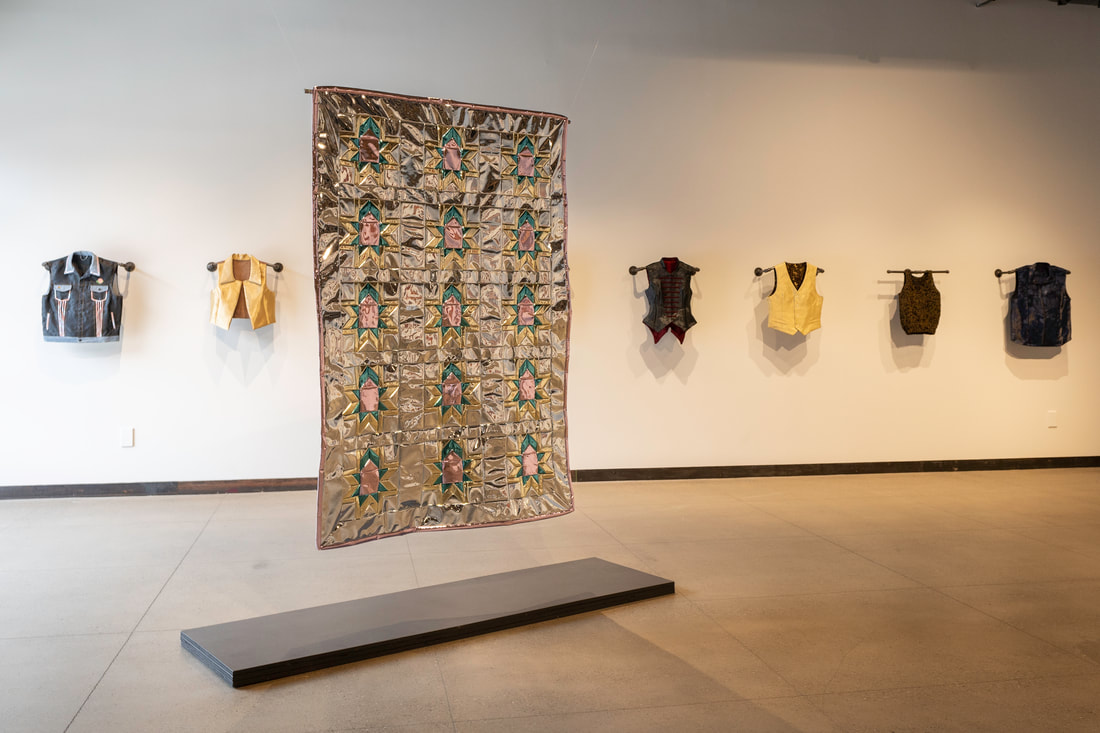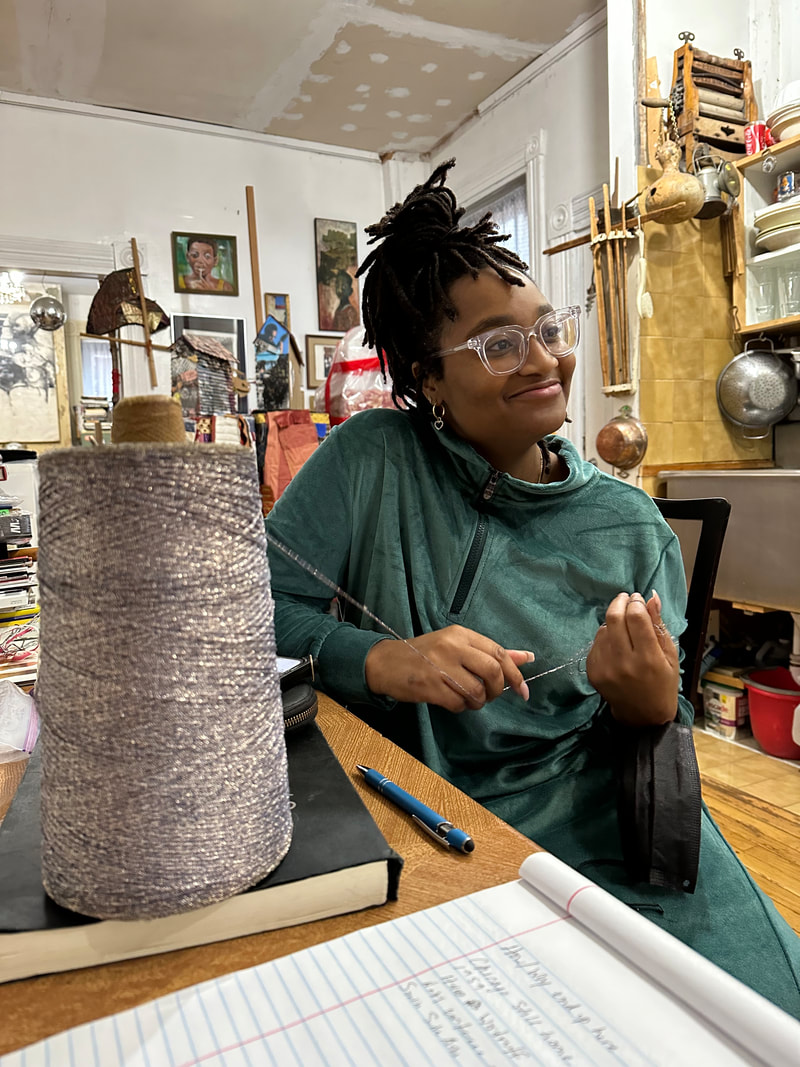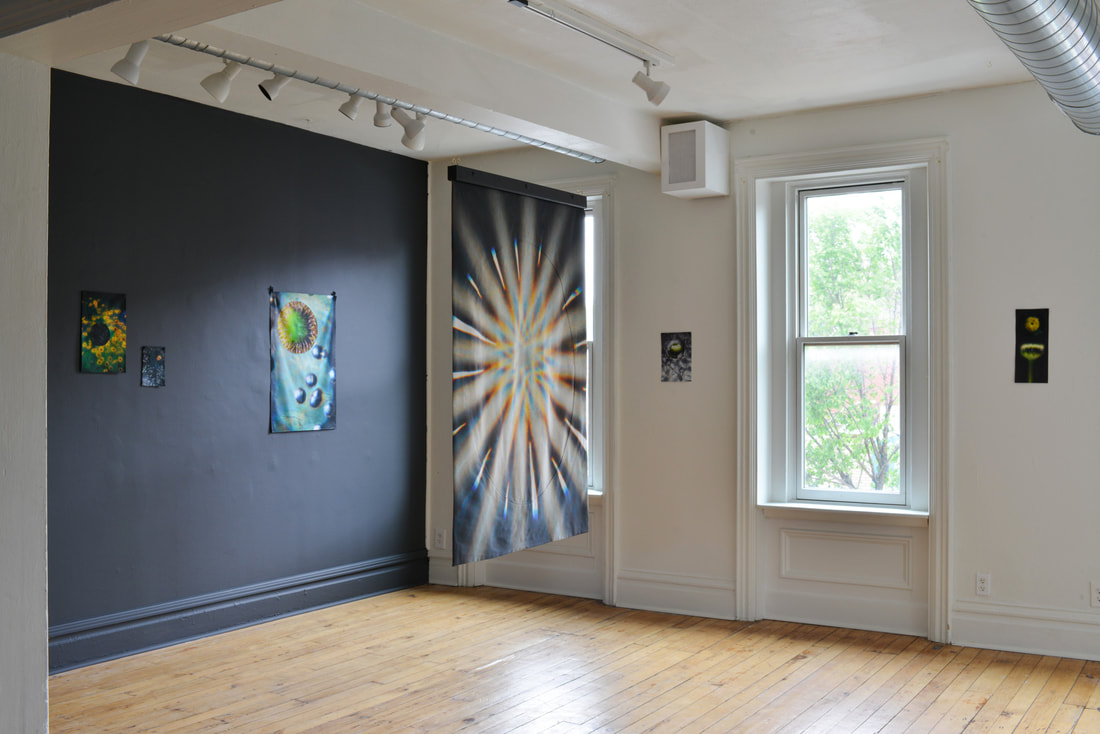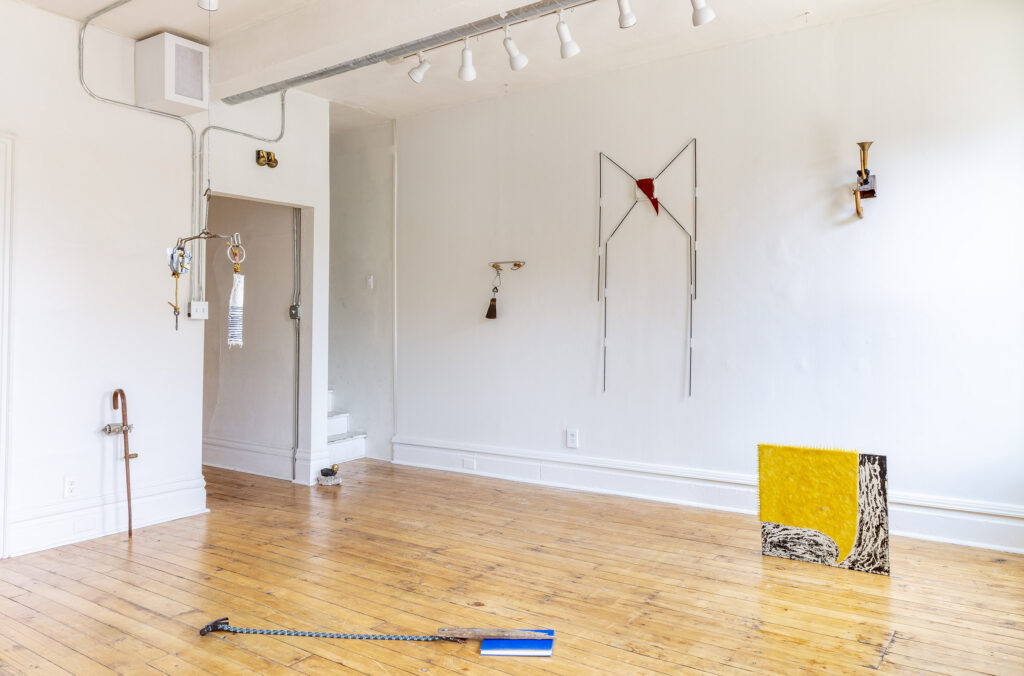
It is by now passé in painting as it is in sculpture that discussion of its merits rests fundamentally on one common interest: that we take it seriously first and foremost because it feels good. I cannot adequately express how Modell’s debut solo show at Bunker Projects, (F)utility, rubs me. What good do words like delicacy, economy, and control serve on the page against the real thing? Raw craft is a simple joy often overlooked for some higher meaning, but this is the foundation from which my experience of Modell’s work flows. And much like the raw archaeological thrill of thrifting in a new city, Modell’s pieced-together works give space to worldly storytelling that must be flipped through, parsed, and passed over.
I first walked into Bunker not even twelve hours after moving into the city. I stepped into this show already curious about the world around me, so perhaps it’s only natural I see this show as exactly that: archaeological. And Bunker Projects is obviously a house, its residents coming downstairs towards the kitchen, which is directly in sight of Modell’s work. The circumstances of this casual space set the scene for something altogether more casual, more personable, and intimate. Modell’s work relies on junk you’d find thrown out on the side of the road, lending his materials a mundane worldliness that is filtered into the more private, pristine environment of the studio artist. One could, of course, imagine where an archaic bell came from, what store register a tiny Buddha figurine presided over or if that Supreme sticker implicates his own wardrobe into the work. But where the show comes alive is through Modell’s own voice–his authority over his subjects, his trash. What is added in gluing rocks together or inking up a chest is more material than that: meaning, narrative, richness. In the pristine, alien, ahistorical world of the gallery, what new logic do these objects serve? What stories are there to tell? Where else is there left to go?
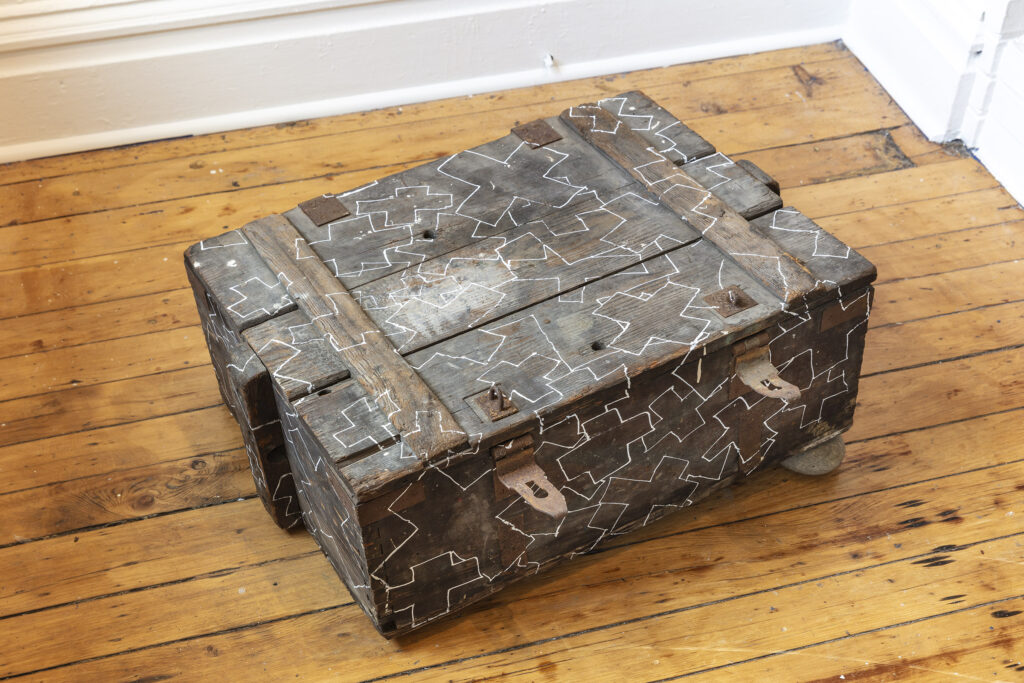
This is, I think, the most difficult problem in assemblage to tackle. It’s one of voice and of purpose. Perhaps I can relate to Modell as a fellow soft and fleshy, vulnerable emerging artist (or maybe it’s entirely presumptuous of me), but my enjoyment of this show does not stick to the confines of Modell’s artistic intentions. I’m excited by moments that don’t fall out of line with the rest of the collection. Themes that present themselves in singular works, that are introduced but not expounded upon. New avenues spurred on by chance encounters with junk. New dimensions present themselves in Modell’s sculptures and then, like that, flit out of view. As one would expect of an artist’s debut show, this is not some perfect show, split from the heavens and fully formed. Like any show of found-object assemblages, it carries its own raw edges confidently forth. I think we could revel in that quality. One imagines the artist struggling, negotiating–as we always do–with what the work could be. Tethered to the materials only he can find, now presented before me, sitting in a cozy armchair beside a painted-white fireplace, I’m starting to get to know these works. Through his own intuitions, I may even get a glimpse of Modell. The artist simultaneously brings himself into these works and evacuates himself from them.
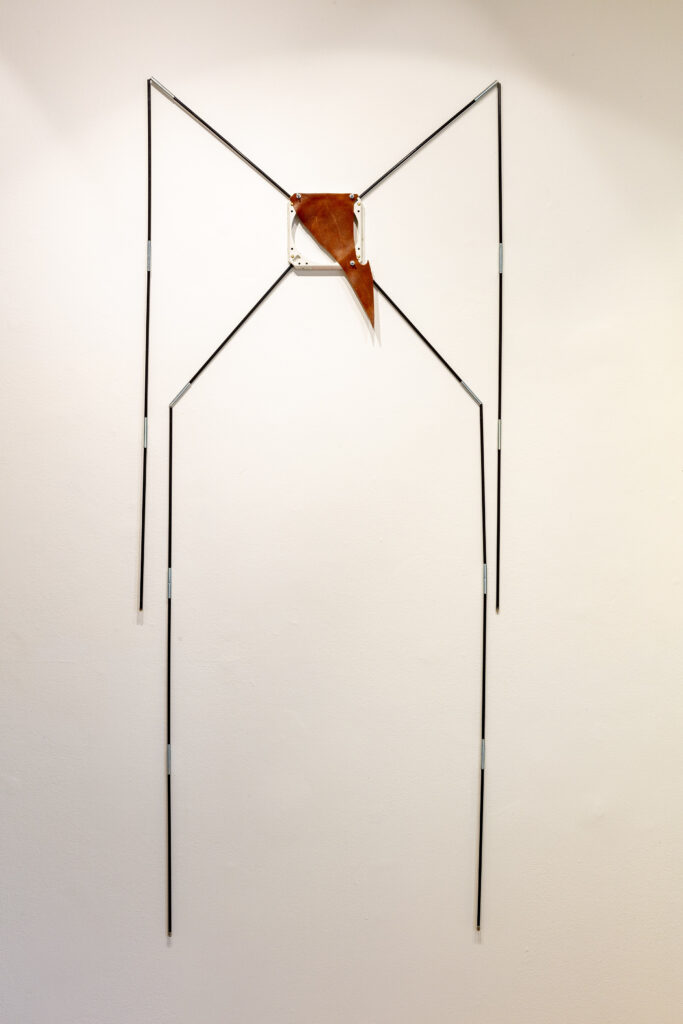
I take pause in the barren form of Dreamcatcher. A new and exciting moment among many, this piece has stuck with me the most through my writing. With the rest of these works running the gamut from sculptural-paintings to painterly-sculptures, this piece presents a complication to the vocabularies Modell has developed. This corpse looms over 5 feet tall, one of the largest pieces in the show, yet its rail-thin wire figure, draped in a sharply-tailored, form-fitting cutting of electrical tape, carries a hollow presence that hangs itself over the rest of the show. Its sparse composition, dangling form, and clean geometry set itself. Even tripping over the works scattered around the room on the floor (an alarming experience in its own right) could not pull me from the feeling that, mere feet behind me, I was being watched. As his sculptures go, it is notably put-together, cohesive to the point it becomes its own object; to a point, I fail to recognize the artist’s hand. It carries its own material logic, of its own world–it makes sense. There is a feeling that I can myself try to understand it. Standing in such a somber field of objects, I try to imagine what dreams may pass through it.
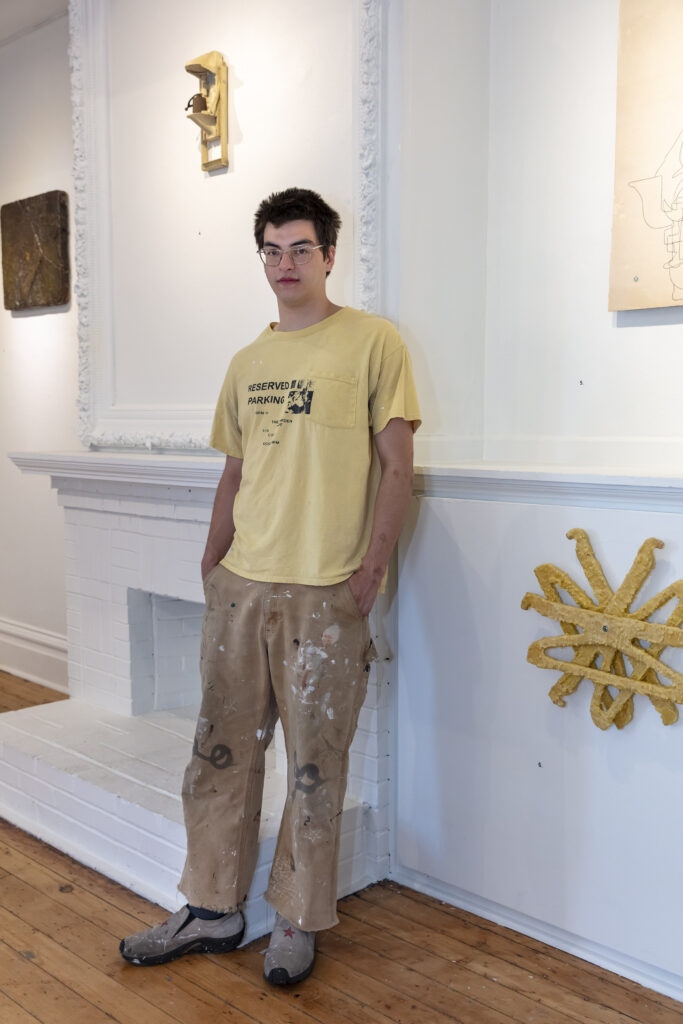
Far as I can tell, Modell speaks through a voice grounded both in the material sensibilities of a contemporary artist as much as in the tendencies of alternative fashion–from contemporary streetwear to designer. A fundamentally (for lack of a better word) thrifty artistic process finds good companions in the brand identities of Rick Owens or Raf Simons. Though this relationship is visually obfuscated (the only direct reference being a barely visible 2015 Supreme patch in preservative), the language of the body diffuses itself into these works. It makes complete sense, as clothes are perhaps the first relationship we form between our body and the objects around us. Works like Mudguard or Portal form fairly simple painterly surfaces, their raw textures evocative of leather or skin. They call to you in the sumptuous, but still, voice of a fine coat. With other works begging to be picked up, I think of reaching out and running a finger along his paintings. I don’t follow through. While I’m contemplating violation, smaller sculptures like protection piece or oscillating super-cane present different processes of imbuing meaning onto everyday objects: in protection piece, the mass-produced form of mechanically punched sheet-metal is made sacrosanct, taking on a divine symmetry and interactivity that brings the viewer closer to holiness. If it were only smaller it might serve as a charm or pendant; still, the viewer can spin it around–magic enough for the anodyne gallery space. Comparatively, oscillating super-cane livens up the room a bit. It is a cane attached to a wall-mounted meat-grinder; no pretense in painterly surfaces, no technical craft to show off. In a way, this is the simplest vision of purity in the show.
Coming out of Bunker, I feel I’ve left a soft-spoken conversation. Not that I took part in something didactic, or even that I’ve conversed with Modell as equals (on the contrary, I do not know him), but I feel I’ve occupied space alongside his work; that I’m along for the ride. Here is an artist demonstrating his material capabilities while tiptoeing into the possibilities of curation and organization. It does not ordain anything on the topic of utility, or a lack thereof–that we might feel a semi-obsessive need for function, or display a lack to demonstrate the virtues thereof. Usefulness, as it calls to us, is a game for the artist and the artist alone. The work simply is, was, and will be–beyond its existence in front of me. I’m left wondering how this work could continue on any further. This show was a demonstration, but I can only see the limits and boundaries of your work so long. What new focuses will come into Modell’s view? What new purposes could this line of work serve for Modell? Only time will tell. Still, this is an artist to keep your eyes on.
(F)utility is on display now at Bunker Projects through Sunday July 7th
Cass Dickenson (American, b. 2000) is a queer multi-disciplinary artist interested in the language and infrastructure of aspatial communities founded online, primarily through the existence of the furry subculture. They work in painting, collage, printmaking, and sculpture. Born in Nashville, TN, Dickenson received a Bachelor of Fine Arts in Painting and Drawing from the University of Tennessee at Chattanooga. In addition to works exhibited at Wavelength Space, Stove Works, and Apothecary Gallery, they have worked with Chattanooga-based residency Stove Works, with a focus on arts programming and events. Dickenson now resides in Pittsburgh, PA.
